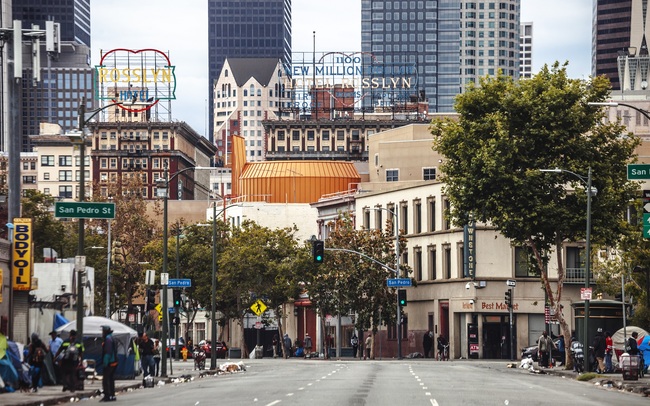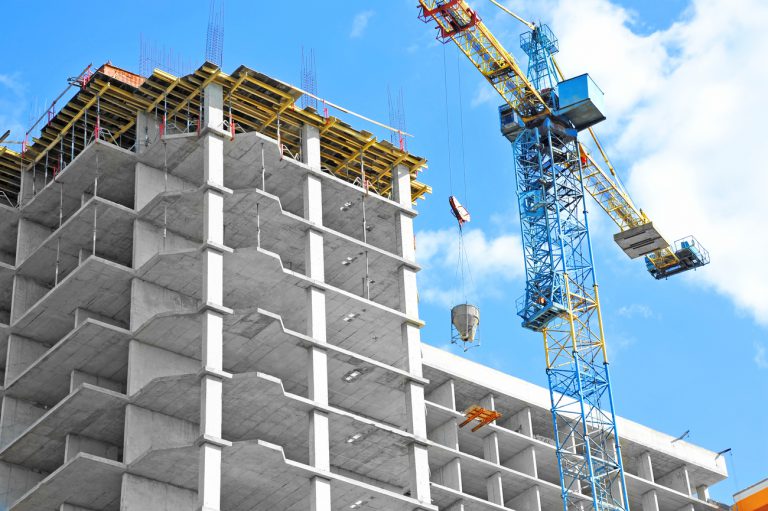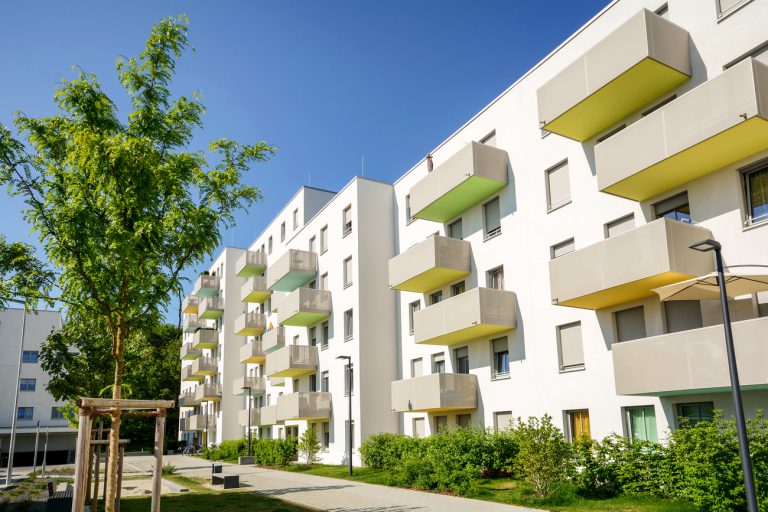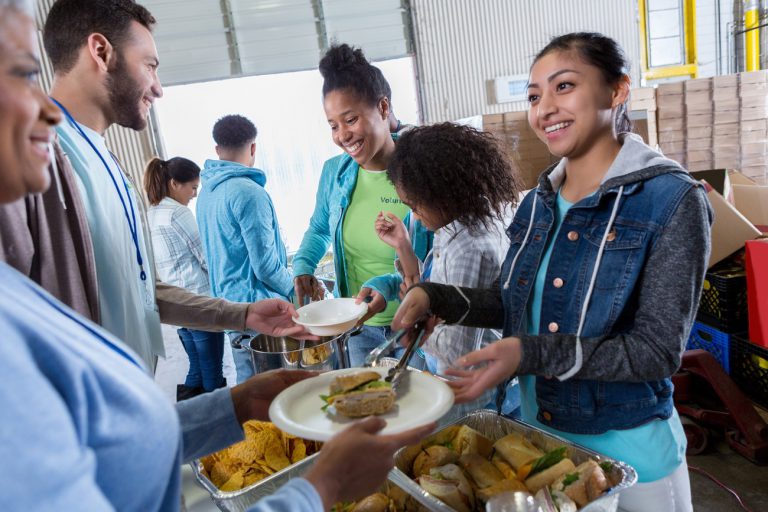Everyone in: Combating Rising Homelessness in Los Angeles County
This story was created in partnership with the Los Angeles Homeless Services Authority (LAHSA). LAHSA was formed in 1993 to streamline responses to homelessness at the county and city levels. The agency conducts outreach and provides a Coordinated Entry System (CES) to connect homeless individuals and families to services, administers federal, state and local funding to over 100 service providers, and conducts an annual count of the number of homeless people across Los Angeles County to track progress and inform solutions in fighting homelessness. This year’s Homeless Count was conducted in January with the help of thousands of community volunteers.
Homelessness in the Los Angeles Region
In 2018, Los Angeles County saw its first decrease in homelessness in almost 5 years, only to see it rise again in 2019 to nearly 59,000 people, representing a 12% increase over the past year. Consistent with previous years, 75% of people experiencing homelessness in Los Angeles County are unsheltered, meaning they are living on the streets, in vehicles, in abandoned buildings, and in other places not suitable for human habitation. According to HUD’s 2018 report on homelessness nationwide, Los Angeles County has one of the highest rates of unsheltered homelessness in the entire country. Further, Black people continue to be overrepresented in the population experiencing homelessness compared to the general population both locally and nationally, as highlighted by a recent report from the Ad Hoc Committee on Black People Experiencing Homelessness.

Homelessness is a problem across the county. In the last year, it increased in each Supervisorial District, and nearly two thirds of LA County neighborhoods saw an increase in the population experiencing homelessness. In 26% of neighborhoods, the population experiencing homelessness doubled over the last year. The interactive map below shows the number of people experiencing homelessness in each neighborhood in LA County in 2019, 2018, and 2017.
Underlying Causes of Rising Homelessness
A combination of factors is pushing Angelenos into homelessness. The Los Angeles metropolitan region consistently ranks as one of the least affordable housing markets in the world. Since 2000, median rent in Los Angeles County has increased by 32% while median renter household income decreased by three percent over the same period. One recent report on housing affordability in the region found that a minimum wage worker supporting a family would have to work 167 hours per week to afford the average 2-bedroom rent. Furthermore, California Housing Partnership estimates that in order to meet the current demand for affordable housing, Los Angeles County needs almost 517,000 more affordable rental homes than are currently available. According to LAHSA’s 2019 Demographic Survey, approximately half of adults experiencing unsheltered homelessness cited economic reasons (such as unemployment or eviction) as one of the main causes of their homelessness, demonstrating the impact of lack of affordable housing and wage stagnation on homelessness.



New Homelessness and Chronic Homelessness
Given the lack of affordable housing and stagnant wages in Los Angeles County, people are falling into homelessness for the first time at high rates. According to the 2019 Homeless Count, 23% of unsheltered adults are experiencing new homelessness, meaning they fell into homelessness for the first time in 2018. In addition to large inflows of new homelessness, chronic homelessness also increased by 17% from 2018 to 2019. Chronic homelessness describes people who have experienced homelessness for at least a year — or more than four times in the past three years — while struggling with a disabling condition such as a serious mental illness, substance use disorder, or physical disability. While people experiencing new homelessness and people experiencing chronic homelessness both represent significant portions of the unsheltered population, they have differing demographic characteristics and experiences, demonstrating the complexity of providing services and ending homelessness in Los Angeles County.
According to LAHSA’s 2019 Demographic Survey of unsheltered adults, people experiencing new homelessness tend to be younger (46% of people in adult-headed households were under the age of 40), disproportionately identify as Latinx, and are more likely to be living as a family with children, while people experiencing chronic homelessness are disproportionately in their 50s and living as individuals. People experiencing chronic homelessness also reported higher rates of experience with domestic violence, justice involvement, and military service – each of which could warrant a unique intervention strategy.
Rapid Re-Housing
Given the range of unique situations and needs within the population experiencing homelessness, effectively combating homelessness requires multiple types of interventions. Through new homeless services and housing funding sources like voter-approved Measure H and Proposition HHH, LAHSA and their partners can provide a number of different housing solutions.

One such intervention, called rapid re-housing, is often effective for people experiencing new homelessness as it is designed to assist individuals and families that do not need intensive and ongoing support in order to exit homelessness. The rapid re-housing program helps individuals and families find appropriate affordable housing, gives financial assistance for housing-related expenses like deposits, moving costs and rent, and provides case management and access to services like financial literacy, job training, and family counseling. LAHSA’s rapid re-housing program housed over 7,200 people in Los Angeles County in 2018, representing about one-third of total housing placements for the year.
Permanent Supportive Housing
For people experiencing chronic homelessness who may need more intensive services than those provided in rapid re-housing, permanent supportive housing (PSH) is widely accepted as an effective housing intervention. PSH provides permanent housing with more intensive services than rapid re-housing, including healthcare, substance use treatment, and mental health counseling. Importantly, PSH employs a “housing first” model, which provides housing to individuals experiencing homelessness without preconditions such as sobriety or participation in treatment services. Studies have found that between 74% and 94% of people in PSH remain housed. In the past year, LAHSA placed over 5,000 individuals in PSH, representing just under a quarter of its total housing placements for the year. As of July 2019, the City of Los Angeles has committed $810 million of funding from Proposition HHH to build PSH units, and currently has almost 1,400 PSH units under construction with a goal of building over 4,000 new units by the end of 2022.


Everyone In
Despite instances of vocal community resistance to temporary shelters and PSH development in neighborhoods, many Angelenos are also stepping up to express their support for their neighbors experiencing homelessness. Both Measure H and Proposition HHH, which raise funds for affordable housing and homeless services, were approved with over two-thirds majorities. Additionally, over 7,000 volunteers signed up to participate in the most recent Homeless Count.

A number of grass-roots organizations have also sprung up as a counter to the organized community resistance to proposed shelters. Concerned citizens are mobilizing to provide services like meals, showers, and housing placement assistance to their homeless neighbors while they wait for Proposition HHH PSH projects to reach completion.
Aided by Measure H and Proposition HHH funding, LAHSA, local governments and service providers have been working tremendously hard to reverse the trends of rising homelessness in the region. In the past year, they placed more people than ever before (21,631) in some form of permanent housing. However, these efforts are not enough – everyone in Los Angeles County must step up to meet the challenge of housing our neighbors experiencing homelessness. From employers paying living wages to developers building more affordable housing units to community members embracing PSH and shelters in their neighborhoods – we all have an active role to play in ending the crisis of homelessness in Los Angeles County. Let’s work together to put people first and make Los Angeles a better place for everyone.
The 2020 Homeless Count will be held January 22, 22, & 23, 2020. Visit https://www.theycountwillyou.org/ to learn more and sign up to volunteer.

Ian Gabriel
Ian Gabriel is a Master of Public Policy student at USC Price, interested in housing policy and homelessness. Prior to enrolling at USC Price, he worked as a project manager for a public affairs firm that combined art and creative organizing to amplify the messages of its clients, all progressive non-profit organizations and labor unions. He is a proud collaborator and volunteer at Studio 526, an art studio and safe space in Skid Row made possible by homeless services and housing provider The People Concern. Ian is also involved in community-based research projects and art/music events in the Skid Row community.
Sources
California Housing Partnership. (2017). Los Angeles County Renters in Crisis: A Call For Action. Link
California Housing Partnership. (2019). Los Angeles County’s Emergency Housing Update. Link
Demographia. (2019). 15th Annual Demographia International Housing Affordability Survey: 2019 Rating Middle-Income Housing Affordability. Link
Homelessness Policy Research Institute. (2019). Outcomes in Single-Site and Scattered-Site Permanent Supportive Housing. Link
Huang, J. (2019). Protesters Killed A Plan For A Koreatown Homeless Shelter. But That’s Just The Beginning Of The Story. Link
Los Angeles Homeless Services Authority. (2018). Report and Recommendations of the Ad Hoc Committee on Black People Experiencing Homelessness. Link
Los Angeles Homeless Services Authority. (2019). 2019 Greater Los Angeles Homeless Count Presentation. Link
Los Angeles Housing and Community Investment Department. (2019). HHH Progress. Link
Oreskes, B. (2019). For 2019 homeless count, thousands of volunteers are set to deploy across L.A. Link
Pener, D. (2019). “Yes, in My Backyard!”: Inside Hollywood’s New Embrace of Homeless Neighbors. Link
Southern California Association of Nonprofit Housing. (2018). Out of Reach in 2018. Link
United States Department of Housing and Urban Development. (2018). The 2018 Annual Homeless Assessment Report (AHAR) to Congress. Link
United States Interagency Council on Homelessness. (2018). Rapid Re-Housing. Link
Photo Attributions
Cover Photo: Photo courtesy of Istock/steinphoto
Photo 1: Photo courtesy of Istock/benedek
Photo 2: Photo courtesy of Istock/JLGutierrez
Photo 3: Photo courtesy of Istock/peeterv
Photo 4: Photo courtesy of Istock/mrdoomits
Photo 5: Photo courtesy of Istock/GCShutter
Photo 6: Photo courtesy of Istock/unkas_photo
Photo 7: Photo courtesy of Istock/ah_fotobox
Photo 8: Photo courtesy of Istock/SDI Productions
The communities shown in the map on this story are slightly different than those shown on NDSC. Glendale, Long Beach, and Pasadena are excluded, as they are not a part of the Los Angeles Continuum of Care.

